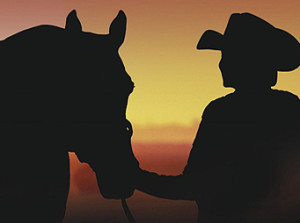Death of AQHA’s Stallion Incentive Fund Program
Click here to read the complete article60 – November/December, 2017
by Kristen Spinning
 The AQHA Stallion Incentive Fund has been an institution for over 30 years and had paid out more than $80 million over its lifetime. In its early years, participation was seen as vital to most serious breeders. Stallion nominations peaked in 1996 at 3,682 and managed to stay over 3,000 for a decade. Breeders and exhibitors enjoyed year-end checks and many factored those amounts into their equine economics. For the past 15 years however, a downward trend in both stallion and foal nominations was exacerbated by global economic forces and internal shifts to AQHA showing preferences. Changes to the program could not resurrect its popularity. In July, AQHA decided to conclude the program. This decision has launched a discussion with widely divergent views.
The AQHA Stallion Incentive Fund has been an institution for over 30 years and had paid out more than $80 million over its lifetime. In its early years, participation was seen as vital to most serious breeders. Stallion nominations peaked in 1996 at 3,682 and managed to stay over 3,000 for a decade. Breeders and exhibitors enjoyed year-end checks and many factored those amounts into their equine economics. For the past 15 years however, a downward trend in both stallion and foal nominations was exacerbated by global economic forces and internal shifts to AQHA showing preferences. Changes to the program could not resurrect its popularity. In July, AQHA decided to conclude the program. This decision has launched a discussion with widely divergent views.
Stephen Stephens at Dry River Ranch looks forward to what new programs AQHA may develop in the future. “It was a great program with a great structure. But, like any business, you have to constantly evaluate and change the structure to keep up with the times,” he says. He recalls that when the program was successful, the feeling was, “if the wheel ain’t busted, don’t fix it.” In that same vein, ”You have look at what terrain is coming up in front of you and decide if you have to change that wheel because you have a rocky patch ahead.” He laments that the incentive fund’s structure was changed well after the time when both the breeding and showing industries had already evolved. The program began when points were based on shows that typically only had one or two judges. “When we got three, four, and six judges, the number of points you were getting in just one place was depleting the fund so badly.” He believes some type of restructuring at that time would have helped keep the credibility of the points. When changes to the program finally did come, people didn’t understand it or embrace it, so the program continued to falter. He says, “People don’t mind paying more for something when it’s successful. But, when it’s on it’s last legs and you raise the fees, people think ‘I’m not getting anything from it, why would I pay more for it?’”
Stephens notes that the APHA’s Breeders’ Trust Program has restructured and it looks to have promise. He’s enthusiastic about the future concluding, “I’m sure they’re going to come up with great ideas for a new incentive type of fund, whether it’s a breeders fund or an all over Quarter Horse fund. AQHA will figure it out.”
Click here to read the complete article60 – November/December, 2017










